 Crime
Crime  Crime
Crime  Technology
Technology 10 Hilariously Over-Engineered Solutions to Simple Problems
 Miscellaneous
Miscellaneous 10 Ironic News Stories Straight out of an Alanis Morissette Song
 Politics
Politics 10 Lesser-Known Far-Right Groups of the 21st Century
 History
History Ten Revealing Facts about Daily Domestic Life in the Old West
 Weird Stuff
Weird Stuff 10 Everyday Products Surprisingly Made by Inmates
 Movies and TV
Movies and TV 10 Actors Dragged out of Retirement for One Key Role
 Creepy
Creepy 10 Lesser-Known Shapeshifter Legends from Around the World
 Animals
Animals 10 Amazing Animal Tales from the Ancient World
 Gaming
Gaming 10 Game Characters Everyone Hated Playing
 Crime
Crime 10 Terrifying Serial Killers from Centuries Ago
 Technology
Technology 10 Hilariously Over-Engineered Solutions to Simple Problems
 Miscellaneous
Miscellaneous 10 Ironic News Stories Straight out of an Alanis Morissette Song
Who's Behind Listverse?

Jamie Frater
Head Editor
Jamie founded Listverse due to an insatiable desire to share fascinating, obscure, and bizarre facts. He has been a guest speaker on numerous national radio and television stations and is a five time published author.
More About Us Politics
Politics 10 Lesser-Known Far-Right Groups of the 21st Century
 History
History Ten Revealing Facts about Daily Domestic Life in the Old West
 Weird Stuff
Weird Stuff 10 Everyday Products Surprisingly Made by Inmates
 Movies and TV
Movies and TV 10 Actors Dragged out of Retirement for One Key Role
 Creepy
Creepy 10 Lesser-Known Shapeshifter Legends from Around the World
 Animals
Animals 10 Amazing Animal Tales from the Ancient World
 Gaming
Gaming 10 Game Characters Everyone Hated Playing
9 Sinister Facts About The Dark Side Of Instagram [WARNING: Disturbing]
Instagram can be a sordid place. It may appear to be all avocado toast and #duckfaceselfies on the surface, but scrape away that digital veneer and you reveal a much dingier side to the social media platform. As well as pink-haired pre-teens and flash-in-the-pan celebrities, Instagram is home to all manner of shady characters—from violent Taser-wielding cyberbullies to militant terrorists. And while the site claims to be “simple, fun & creative”, the darker fringes of Instagram are having a huge impact on its users. A recent study by the Mental Health Foundation found that almost half of young adults have suffered some anxiety linked to the pressures of social media. Here are nine of its darkest aspects. Oh . . . before you read, follow Listverse on Instagram—mention your own instagram account in the comments if you want some follows back.
SEE ALSO: 10 Creepy Things Social Media Does To Control Your Mind
9 The Human Skull Market
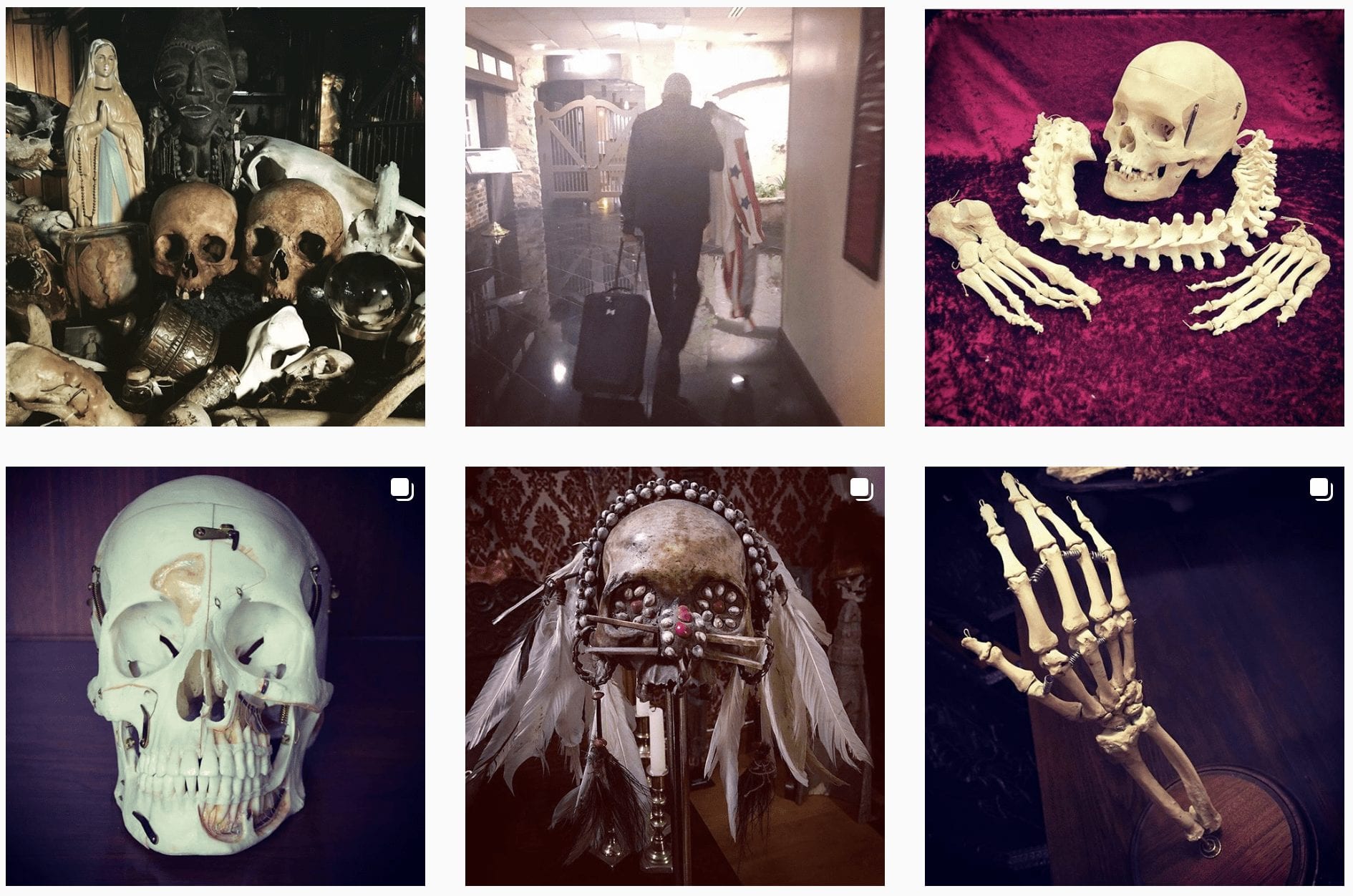
In recent years, a niche circle of people has emerged online with a passion for collecting human remains. The macabre hobby has gained something of a cult following on social media. Since 2016, when eBay banned users from selling human body parts, the avid network of traders has used Instagram to buy and sell human skulls. Henry Scragg, one of the kingpins of the Instagram skull market, boasts over 33,000 followers. In the past, artifacts have been known to retail for the best part of $20,000 (£16,000).
Instagram is home to a number of illegal black markets—weapons, stolen artifacts, and rare animals to name a few. But unlike those illicit trades, the people who sell human remains online aren’t actually violating any laws. For the most part, bones are covered by the “no property rule” and therefore have no legal provenance. While some US states do technically place legal restrictions on the skull market, traders have found that in the majority of cases these laws go unenforced.
The collectors claim to be part of a respectful, if rather morbid, community; one that is often misunderstood by outsiders. However some historians are concerned by the “dark echoes of colonialism” that haunt this supposedly eccentric pastime. Some traders have received further criticism from historians and archaeologists for falsely decorating their skulls to resemble “tribal” aesthetics. [1]
8 Baby Adoption Scammers

An increasing number of couples in the US are turning to Instagram to adopt a baby. Long waiting lists are driving wannabe parents away from traditional agencies and onto social media. And while many do find success, others end up as victims of a cruel and emotionally traumatic scam.
Imposters pose as pregnant women to convince couples that they are being offered their babies, then disappear leaving the aspiring parents devastated. In some cases the scammers have strung couples along for months, letting them believe they are on the cusp of adopting a gorgeous newborn baby, only to pull the rug from underneath them at the last minute.
Earlier this year, the BBC reported on Samantha and Dave Stewart from Michigan who were left in tears after the pregnant teenager they were hoping to adopt from turned out to be a fake account. “They don’t ask for money,” Samantha posted on Instagram shortly after the supposed mother cut off communication. “They don’t ask for material things like a lot of scams do. They want your time, emotional investment and quite frankly someone to talk to while promising you what you are desperate to find: your future child.”
And there lies one of the issues in clamping down on this scam. Because the victims are defrauded emotionally, but not financially, most US states do not have the legal power to hold the scammers to justice.[2]
7 Exploitation of Grief
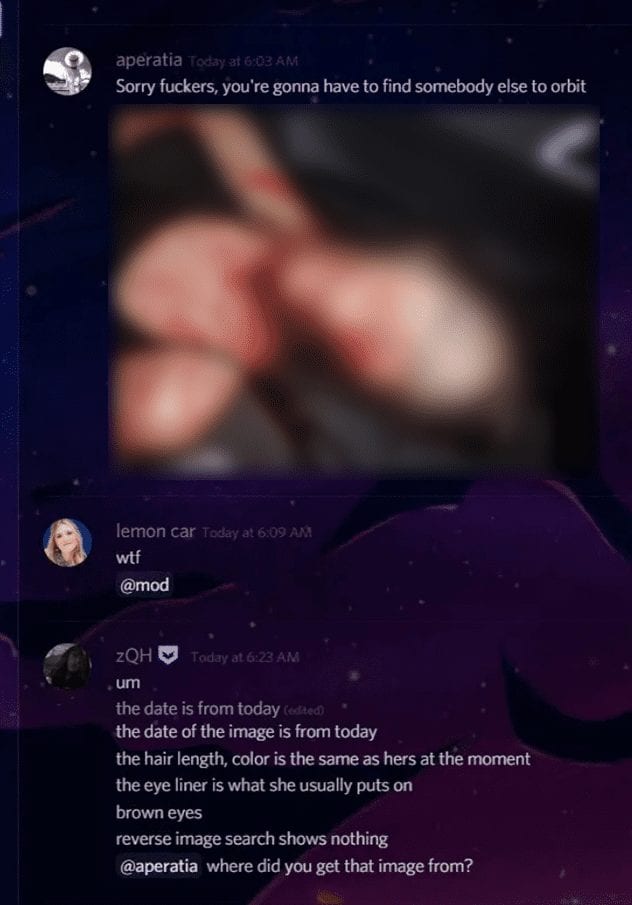
On Saturday July 13 2019, Bianca Devins, aged seventeen, traveled hundreds of miles from her home in New York to attend a concert with 21-year-old Brandon Clark. She never returned home. In the early hours of Sunday morning, Devins was killed by a knife to the throat.
Soon afterwards, images of Devins’ bloodied corpse began to emerge online, which were then shared across Instagram. The images, which came from Clark’s account, included a photograph of her torso with the caption, “I’m sorry Bianca.” Another was a selfie that Clark had taken lying on a tarpaulin that was allegedly covering Devins’ body.
It took the site several hours to remove the disturbing images, by which point they had been shared hundreds of times. Some social media users capitalized on the events in hope of gaining more followers and increasing their popularity, posting comments like, “FOLLOW ME!!!& DM !! me for full video and picture”. Clark, who was subsequently charged with Devins’ murder, saw his social media following surge. According to one BBC report, some twisted individuals even edited images of Devins’ body into vile memes. Users who attempted to flag up the distressing images to Instagram’s moderators claim their reports were rejected.
In the aftermath, Instagram was heavily criticized for not addressing the images sooner and allowing users to exploit Devins’ traumatic death for personal gain. The response to Devins’ murder—which happened months after Australian gunman Brenton Tarrant live-streamed the notorious Christchurch mosque shootings on Facebook—poses a number of questions about the ethics of moderation of social media.[3]
6 Terrorist Propaganda
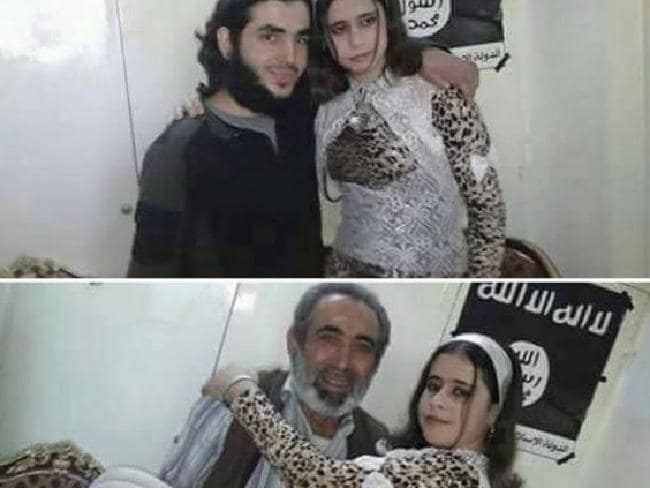
Instagram is the latest social media site to be targeted by terrorist propaganda. In 2017, The Times reported that more than 50,000 accounts had some links to ISIL militants. Supporters of Islamic State are able to spread their extremist message to a wide audience through posts and stories on the image-sharing site.
With traditional sites like Facebook and YouTube cracking down on terrorist content, organizations are migrating onto the newer platforms for publicity. As well as Instagram, militants in Syria are said to be using Snapchat to communicate amongst themselves and search for new recruits.
The content of their online propaganda tends to vary. At times it includes videos of public executions or images decapitated “kafirs”, a term that refers to non-believers. But besides the violent imagery, Islamic State also broadcast scenes of locals completing regular upkeep such as repairing roads and harvesting crops. As Neil Doyle, a journalist specializing in Islamic terrorist, told reporters, ISIS is attempting to “paint areas it controls as paradise on earth.”[4]
5 Unattainable Weight Loss Claims

Social media is notorious for wreaking havoc with users’ body image. There is a widely documented history of people, especially young women, feeling ashamed and disgusted when they compare their own bodies to images of highly airbrushed models. A recent study by the Mental Health Foundation revealed that one in eight adults has thought about taking their own life for reasons linked to body image anxiety.
Now a new market has emerged on Instagram to profit from users’ insecurity and negative body image. Exploitative companies have popped up on the platform peddling supposedly “miraculous” weight loss products, often with celebrity endorsements. Famous faces like the Kardashians and Cardi B have come under fire from body positivity campaigners for promoting detox teas and slimming lollipops. Several of these products are known to have a damaging impact on people’s mental and physical health.
Instagram is taking some steps to clamp down on these unscrupulous businesses. But, with almost half of young adults reporting some body anxiety due to social media, the advocates of body positivity have definitely got their work cut out.[5]
4 Black Market Verification Ticks
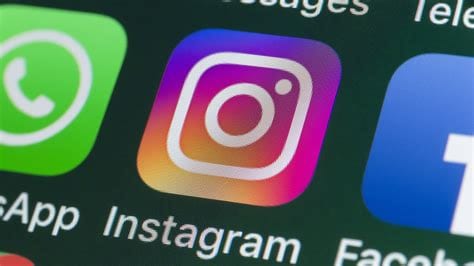
Instagram’s blue tick is one of the internet’s biggest status symbols. The verification check is bestowed upon an elite club of celebrities, influencers and brands. In a sense it is Instagram’s seal of approval, a sign of certification and credibility. Blue-ticked accounts are given pride of place at the top of searches and are able to access exclusive features on the platform.
The hunger for social media credibility has spawned an entire underground market centered on the blue tick. Although Instagram insists that the symbol is not for sale, the digital black market is described as an “open secret” among users desperate for attention online. A number of shady sources claim to be able to provide one for a fee. That tiny blue icon can retail for as much as $15,000 (£12,000).
It may seem like a ridiculous thing to spend money on, but the blue tick is a highly coveted symbol, and a growing number of people have good reason to want one. Influencers—people who promote brands and products to their vast audience of followers—rely on verification to secure sponsorship deals. Brands are more likely to favor blue-ticked accounts, and these sponsorship deals can correspond to huge money. A study by Mediakix suggests that advertisers are shelling out over $1 billion each year on Instagram influencers. That little blue checkmark is a giant boost up the social media pecking order.[6]
3 Toxic Siberian Lake
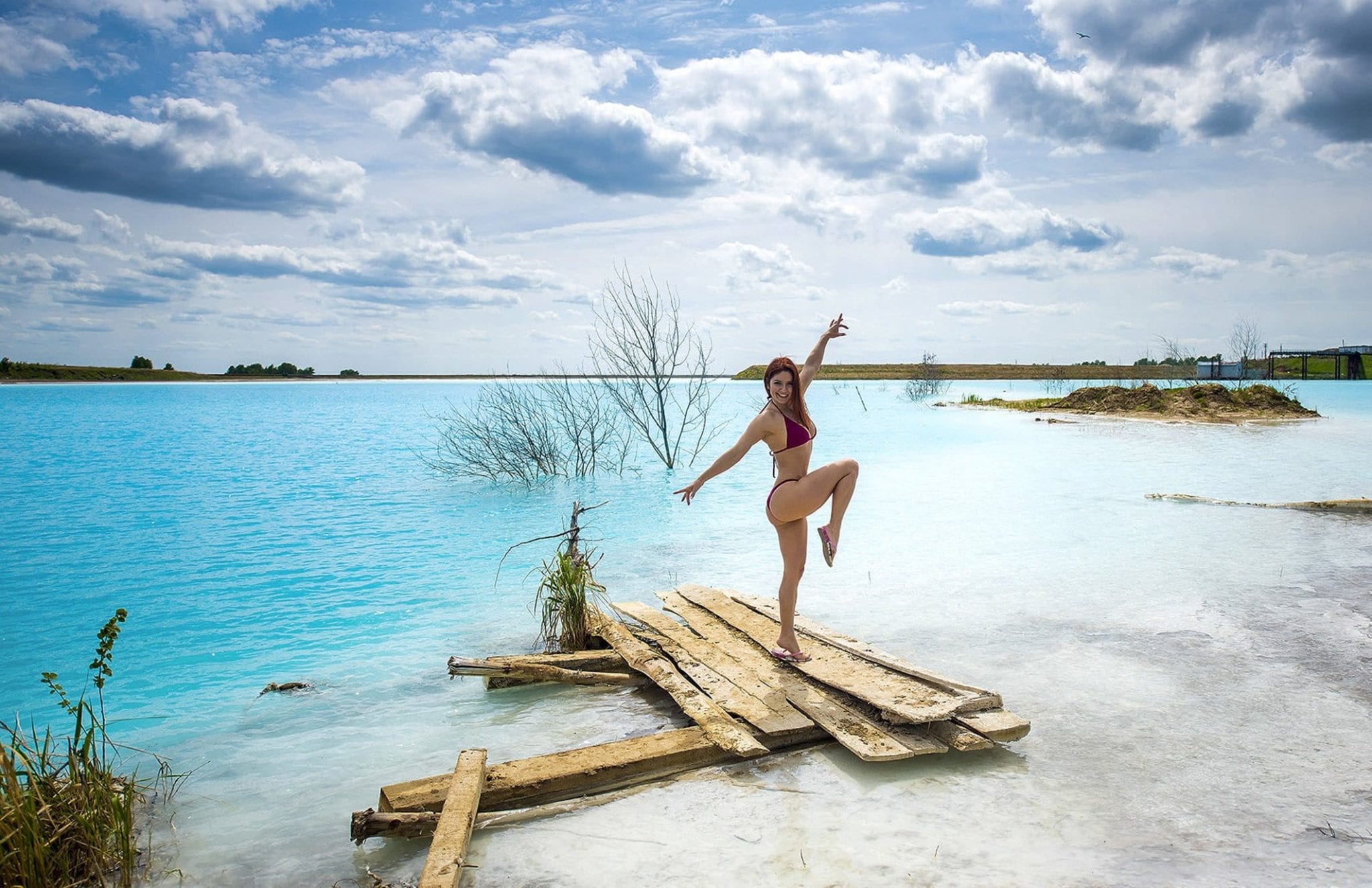
Nestled in the rolling hills of Siberia, an exquisite turquoise lake seems like an idyllic setting for a selfie. Over the summer, swarms of socialites have flocked to the city of Novosibirsk to be photographed against the backdrop of the glimmering waters. Nicknamed the “Maldives of Novosibirsk”, the lake has become such an attraction that it now has its own Instagram page, complete with photos of people kitted out in beachwear, practicing yoga and generally lapping up the view.
But all is not as it seems. Rather than an aquamarine paradise, the lake is actually a toxic dump. What appears to be a freshwater pool is in fact a waste site filled with refuse from a nearby power station. Years of depositing waste ash has made the water highly alkaline, and that alluring shade of blue is actually caused by calcium salts and metal oxides. At the base, the slurry is said to be so thick that it is near impossible to free yourself. And who knows what chemicals linger in the air?[7]
2 Cyberbullying Gets Out of Hand

Cyberbullying is never pleasant. But for one Australian teenager, the digital torment spiraled wildly out of control.
It all began when 19-year-old Yasemin Ercan was called a “dog” on Instagram by a former schoolmate, aged 18. Ercan was livid. To extract her revenge, she arranged to meet up with her old school friend at a shopping centre near Melbourne. But when the 18-year-old pulled into the carpark, Ercan and another man climbed into her vehicle armed with a Taser. The victim was forced to drive around for 20 minutes, until Ercan and her accomplice decided to stop the car and get out. Ercan then slapped and spat on the teenager, a court heard, before attacking her with the Taser.
She had now been charged with various offences including kidnapping and intentionally causing injury. Ercan is also facing trial for threatening to inflict serious injury, after messaging her ex-schoolmate that she would stab her in the throat, shoot her in the head, and “smash the f——” out of her. Ercan was banned from all social media platforms following her arrest in 2018.[8]
1 Blackfishing
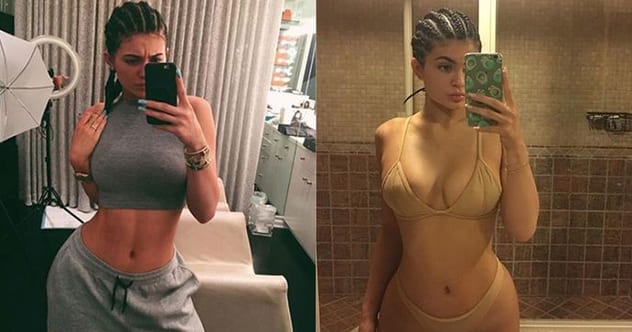
Over the past few years, a new trend has emerged on social media. Users, particularly young white women, are altering their appearance to make themselves look black or mixed race. Users have been known to take melanin hormones, inject their lips and even pay for nose jobs to resemble a black woman.
Nineteen-year-old model Emma Hallberg was one of the first to be taken to task for imitating black women. Although the social media star was born in Sweden, she presents herself online as having dark skin, thick lips and frizzy permed hair. And while she has never overtly claimed to be black, she has never denied it either.
Accounts like Hallberg’s with an avid following are often sponsored to promote brands and products. Black rights activists claim this creates a racist digital culture in which influencers are able to profit by stealing from a culture that they do not naturally belong to.
This mimicking of black identity has even been given a more extreme name by the Black Twitter community: ‘niggerfishing’. The term comes from ‘catfish’, a word for someone who takes on a deceptive alter ego online, usually to dupe others into relationships.[9]
A person blackfishing should not be confused with a trans-black person such as Rachel Dolezal, the difference being that a trans-black is one who believes he or she is the racial form of a transgender: a black woman or man born in a white body.
Read more lists about social media on 10 Ways Social Media May Predict The Future, and Top 10 Disturbing Facts About Facebook.
![Top 10 Dark Facts About The Death Penalty [DISTURBING] Top 10 Dark Facts About The Death Penalty [DISTURBING]](https://listverse.com/wp-content/uploads/2020/06/deathpenalty-150x150.jpg)







